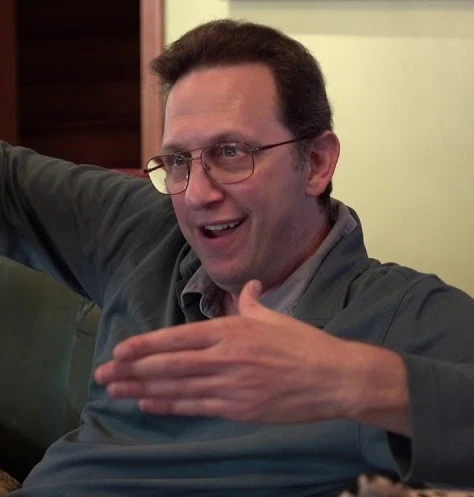
Background: On March 14, 2021, SpongeBob writer and storyboard director Jay Lender did a Q&A with The Art of SpongeBob Discord server (link here). The questions as well as Lender's answers have been replicated here for posterity.
Deleted User asks: How did you get the job to work on Spongebob?
JL: Okay, let's start at the very beginning. A very fine place to start!🎵
My first real job in the industry was at Nickelodeon working on Hey Arnold!
I was brought on to be a storyboard artist, but it was too early for my rotation to begin when they brought me in, so they asked me to do some background design to pass the time until my eventual board partner arrived.
I made the mistake of distinguishing myself in backgrounds, so they wanted to keep me there. After all, why shift me into something they didn't know I could do (it would have been my first board job) from something they knew I could do well!
So I got stuck doing backgrounds on Arnold. I used to attend the story meetings with the writers so I could learn how to do what they did.
Anyway, I really wanted that board job, so I used to agitate for board cleanup or little assignments to help teams that were behind. They gave me a bunch of that kind of work, but the full job never came, so I LEFT!
All my buddies were screaming at me "you'll never find another job! You're insane!"
But the industry was GROWING at the time. We were in the post-Roger Rabbit boom. Shows were popping up everywhere. Nickelodeon and others were filling out their lineup with new cartoons. So I ended up getting a call to do storyboard on another show called C-Bear and Jamal at Film Roman, which was the studio that used to do The Simpsons.
(Don't worry, we'll get to SpongeBob!)
Anyway, after a few months of that I was a Storyboard Artist-tm, and that made the math easier for the Hey Arnold people.
Now the question wasn't "do we want Jay doing boards or backgrounds." it was "do we want Jay here at all?" and thank God the answer was "yes".
So they re-hired me as a storyboard artist on Arnold.
I did 2 more years on that show.
This was before Nickelodeon had an actual studio. We were in rented offices all over town. Angry Beavers in one place, Arnold in another, etc.
Rocko had been in an office on the 2nd floor of the same building where we did Arnold, and one day...
(here we go)
...I was up there picking up some kind of paperwork and I walked past the room where we kept the Steenbeck 4-plate, which was a film editing bay. Old world shiz.
And as I walked past the room I saw this on the little screen:
A WAVE OF ANCHOVIES IN SHIRTS CRASHING OVER THE MAST IN A LOBSTER POT, while a crab and an octopus cowered below.
I did a cartoon double take. I had never seen anything like it.
We all knew that Steve and Derek were doing... something... in that little office they had upstairs, but none of us really knew what it was.
Anyway, I was hooked.
It was another year or so before the show--then thought of as SpongeBoy--got picked up to series.
By then we were in the big beautiful studio on Olive Avenue. I was still boarding on Arnold, but I REALLY wanted to get on that new show. The problem was you had to WRITE to be on that show, and I had only done scripted material before.
So I told the powers that be that I wanted on SpongeBoy, and they said No.
Again the issue was "do we want to take Jay away from something he knows how to do and put him on something we're unsure of?"
So AGAIN, I quit.
And AGAIN my friends thought I was nuts.
But a few weeks later Derek called me and asked me to do a writing test. (and by the way--DON'T DO UNPAID TESTS)
And I was a dumb kid, so I did the test.
I wrote a few scenes with Mr. Krabs and his daughter, who I drew as a shark, for some reason. I haven't seen the bible in ages, so I don't know if I invented that or just got it wrong. Regardless, I must have done okay, because Derek called me in to wrangle a board or two that were having problems.
I sat in a room for a week or two and punched up Squeaky Boots and Pickles--mostly tightening up some filmmaking issues, which often came up because we worked FAST.
And then one day Derek came blowing into my room and said "grab your stuff" and I did, and he dragged me across the hall, threw me in a room with Chuck Klein and said "Chuck's your new director. You're a boarder now. Here's your first show."
And THAT... is how I ended up on SpongeBob.
It was the third board rotation of Season 1. So I was there from nearly the very beginning.
Girls Night Out Fan asks: What is Favourite episode you worked on?
JL: I think that's probably The Camping Episode. It makes me laugh the hardest, after all these years.
I do have a soft spot for Big Pink Loser, and another one just like it for the one where they steal a balloon.
And even though Graveyard Shift isn't the funniest show out there, it has the Nosferatu Gag, which will be what I'm remembered for, if anything.
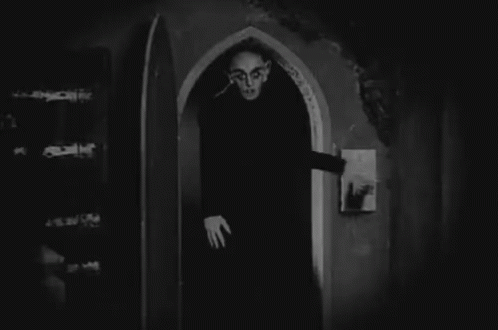
Vonny: that was you?
JL: That was me. My meager claim to fame.
But this is a good opportunity for me to bring this up:
If you want to hear the history of that gag--like hearing the history of a gag is something people want to do--you can read all about it here:
https://www.hoganmag.com/blog/the-oral-history-of-spongebob-squarepants
Hogan's Alley is a great magazine about comic strip/comic book/animation history that comes once or twice a year. It's super-dense and filled with tons of great information and interviews. 10 years ago they conducted an email roundtable with a bunch of the original crew members, and it's probably still the best, and most candid record of the time.
PronounBob asks: Hello Jay. Thanks for all your work over the years. How much were SB boards changed and re-written in the animatic stage?
JL: I was never actually involved in making animatics, so I can't tell you how the process worked on SpongeBob specifically, but I'm sure it was the same as any other show, except the tools were probably harder to use back then. I was a director on Phineas and Ferb for 4 years, so making animatics was in my bailiwick.
I had my excellent editor slap all the panels into a build, and then I would watch and see where it dragged.
We were working entirely digitally by the middle of second season on Phineas, so we had a computer with a Wacom in the same room as the editing bay, and I'd start sketching missing panels or new gags as needed, then I'd shoot them over to the editor and she'd slip them in while I waited.
We had a mic, so I'd record any new dialog that was necessary. A few sessions like that and the show would be transformed.
Things tended to change less than you'd expect in SpongeBob's animatic phase because Steve and Derek were SO involved in the board process.
The day before the Crew Pitch for a new episode, Steve and Derek would come into our office late and work with us on the show until it was GOOD... sometimes running late at night. They'd buy us dinner.
Anyway, because of that they already had the show they wanted to see when they got into animatic, and usually only tweaks were made after that.
There were two notable exceptions I can think of on my shows:
First a little background. Very little.
I was the board artist who did LOTS of panels. I'd do a new panel for a hand gesture or an eye flick. My boards were posed out, and I worked on 2 panel paper most of the time, so my boards were big, honkin' stacks of paper. Probably intimidating to look at, but not really any more complicated than other shows.
Nevertheless, I was asked to stop "writing so much" because my shows were coming in too long. So I kept paring it down and paring it down until my page count was a little slimmer--more in line with the other teams.
This resulted in a lot of gags being cut, and I think that kind of dovetailed with the slower pacing sensibility of my usual timing director.
But when Dan Povenmire and I did The Fry-Cook Games we drew a different director... and when they put it into animatic the show came up way short. WAAAAAAY short.
Derek came flying into my room one afternoon and said "GIMME EVERYTHING WE EVER CUT FROM THIS SHOW!"
So we handed him a stack of pages that were cut for time, and they slugged them back into the show to fill it out.
And that's why we have the chain comping and lemon-eye gags now, among others.
Whew! That was a close one!
There was another part to that answer. Hold on while I figure it out!
Ah the other one was this:
When we wrote Clams there were a lot of other things happening in the story, and a different bunch of gags. But when Steve got it into animatic he suddenly remembered a gag that he had pitched on Rocko, which never happened, and he REALLY wanted to do it now that he had his own show.
That gag was the runner about the orchestra playing the Jaws theme ripoff, and in order to accommodate it he had to revamp the show considerably. I was a touch horrified at the time, but it's a funny bit, and now I'm totally on board!
Six asks: What do you think of modern spongebob? do you like it?
JL: I don't watch SpongeBob.
Editor’s Note: One thing we have in common 😆
It's not a hard and fast rule, but...
If I watch, either I'm jealous, or they're dumping on my baby. I'm not sure what the other reactions would be. Why put myself through it.
Deleted User asks: What was the production process of a single episode of Spongebob like and how long did it take?
JL: Well, I wasn't involved with all of it, but it goes something like this:
(And keep in mind this is the old method. The show is scripted now, so some aspects have changed)
The writers get together and throw out tons of ideas "What if SpongeBob's nose fell off? What it Sandy turned evil? What if Patrick ran a theme park?"
They pick a few ideas that work, then assign them to writers who flesh them out into 3 page outlines and bring them back to the group. They add some important dialog, story twists, all the major beats. The writers roundtable them until they think they're working, then those outlines are handed out to the board teams.
The board team gets the outlines, says "Okay, SpongeBob's nose falls off" then they crumple up the outline and start writing it fresh with post-it notes on the wall.
We usually ignored much of the outline because the writers, by and large, were thinking in terms of dialog and words, and we were thinking in terms of images. Here's where SpongeBob needs to look shocked. Here's three ways he tries to make his nose stay on. Etc.
We really did it all on Post-its, which was THE BEST WAY TO WORK <booming voice from Beyond>
Because it forced us into the real world with our work, rather than hidden in a computer.
Everything we did went on the wall. You could see the entire sweep of the episode in one quick panning glance. And so could your writing partner!
So we always knew where we stood in terms of the SHOW. Nobody could ever get lost in a run of gags or funny poses for long. You knew when it was getting out of hand. You knew when an important plot point was coming too late.
It was also really easy to replace a drawing, or move a scene around. We had blisters on our fingers from the push-pins, but it worked.
At the end of ONE FIVE-DAY WEEK, we had a basic show on the wall--and a stack of old discarded pages and post-its a yard deep on the floor.
Steve and Derek would come in that Friday or the Monday afterward and we'd pitch it to them.
Then there would be a big course correction. They'd see right away where we were messing it up, what runs needed to go, what threads would be better off boosted, etc. Steve would make sure the heart of the character was coming through. We'd get our marching orders, and spend Monday through Thursday of week 2 refining it.
Then, as I mentioned, Steve and Derek would come back on Thursday, help us nail the show, and the Crew Pitch was the following morning.
At the crew pitch we'd get up and pitch everything with voices and sound effects to the entire crew, and Eric Coleman, our Nick exec. If they laughed you went to clean-up. If they didn't we'd sit down and figure out what went wrong and how to fix it, then we'd make those changes as we cleaned up.
We'd spend 2 weeks making pretty drawings--and in my case, adding tons of posing--then hand in the show and get a new premise.
They'd record the voices, and the show would then go through the design process, while the animatic was made. Characters, props, locations, etc. Painting. Color choices. The timing directors would then have to create charts for all the action. Every eye blink. Every footstep. Everything. If you've never seen an exposure sheet, they're really quite something. The weird mathematical expression of what animators do. An artifact of TV Animation scheduling and budgets, and the fact that our animators were increasingly people in other countries who didn't understand the shows they were working on. Nutty!
All that material would be boxed up and sent to China or Korea or wherever they were doing the finish work. They were animating by hand--doing cels for season one, then digital ink and paint and photography afterward. That process took 3 months. By the time the show came back we had done 2 more. Editing and retakes took a few weeks. Sound design and music would be added. It was probably 6-9 months from start to finish for a new episode, and nobody knew when they'd air it.
I think that's it. By the way, feel free to jump in if I ever completely lose the thread!
Moonbeam asks: Are there any episodes you would go back and change if you were given the chance to and if do why?
For years I would have said "I'm Your Biggest Fanatic". I felt it was cruel at the time, and I was really unhappy making it.
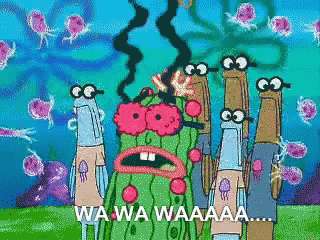
The other one that bugged me was Krabs in Love. I felt then--and I still feel now--that it's just an exercise in justifying an angry explosion from SpongeBob. The whole show exists to see him swear--but not in the fun way that Paul did it when Sponge and Pat learn about dirty words--just raw anger. It's a weak reason to make a show.
(By the way, I love Fanatic now. I was just grousing at the time--but my dissatisfaction for Krabs in Love is real and enduring) 😉
(for/with)
Raggedy Smeary asks: Which character, excluding SpongeBob, was your favorite to work with and why?
JL: Oh, Squidward for sure.
He was easy for me to write. Just saying the driest, most obnoxious thing at any given moment is a trait I share with him. Something I have to work hard to moderate in my own life.
Working with him let me cut loose on that.
Patrick is tons of fun, too, but it took a long time before I really understood how stupid was stupid enough.
That moment came on Big Pink Loser. My first pass at the jar scene was generic and short. Derek was like "No, no, REALLY stupid" and he proceeded to break down the task into the smallest, stupidest possible bits: putting your hand on the jar, moving it in the right direction. It was all Derek and it was brilliant.
I added stuff to the run, but conceptually it was beyond me... or beneath me, if I want to put a happy spin on it.
sabnino15 asks: Did you prefer working on the comics, or the main show itself?
JL: The two are inextricably linked, and part of my enjoyment of the comics comes from being allowed to put into practice everything I learned about storytelling and those specific characters in my own ideas.
SpongeBob Comics was a MIRACLE.
I'm not sure how many of you are aware of what was happening there:
When Steve sold the show to Nick, he used the same lawyer as Craig Bartlett, who created Hey Arnold. She had made the Simpsons deal for Matt Groening, who was Craig's brother in law, and she carved out for Matt the comic book rights for The Simpsons. He could forever make Simpsons Comics without the approval or involvement of Fox.
Steve got the same thing for SpongeBob. We were all comic book nerds back then--and comic book nerds were a thing because not EVERYBODY read them, like they do now. Steve had done his share of them early on. Comics are the cartoon storytelling that a single person can do on their own. Animation was (and mostly still is) far too complicated and time consuming for a single person to do.
Anyway, Steve's into to animation had come in the CalArts Motion Graphics department, which was distinct from the Character Animation group, which was very disney-centric.
The department was run by Jules Engel, an old experimental animation guy. Anyway, if you've seen Steve's college film you know where he was coming from, and how it dovetailed with the SpongeBob you see in his show bible, and eventually in the comics.
He was an experimental guy. He understood the need for conformity of vision and style in TV animation, but in a medium like comics he liked and WANTED to let people rip.
So when you look at SpongeBob comics you see a few comics here and there that look like they'd fit in with the TV vision... but then you see and READ things that are completely unlike the cartoon... except that they all carry the hearts of the characters and world. You see the individual comic artists vision of SpongeBob.
Every issue is a wonder in that sense. What will Hilary Barta's SpongeBob look like? How will Chuck Dixon write a SpongeBob story? What will Ramona Fradon, the CLASSIC Aquaman artist from the 60s do with Mermaid Man and Barnacle Boy? It's insane and wonderful.
I did a bunch of stories for the book--too few--and among them some longer ones. 22 and 44 pages. I got to PLAY. I loved it.
Deleted User asks: Do you ever see yourself returning to the show?
JL: Probably not to the ongoing show. I think the comics spoiled me. If I worked with SpongeBob again in animation I'd want it to be something special, or at least different. You never know!
I'm one of the few who hasn't gone back yet. In a way that's good. For better or worse I got out as on top as I'll probably ever be.
I really admired Steve when he walked away.
He knew that the network would continue on with it. That's the deal he made, and there's nothing wrong with his making it, or their wanting to profit by it. That's the industry.
But I also understood why he went back.
We knew SpongeBob was going to be good when we started it. And it--like all cartoons--was basically our secret for a year and a half while we built up a back log of episodes to run.
But NOBODY could have predicted this. We were floored watching this thing get bigger and bigger, ascending to cultural touchstone and beyond. It'll be around as forever as anything can be.
And it was THAT success that made it necessary for Steve to come back. I mean... he must've thought maybe there would be some new episodes here and there, but they're would always be the original run. The Hillenburg Years.
But it never stopped. It's the same show, just more and more. It's only NOW becoming different shows that can be understood and appreciated or not on their own, like all the Flintstone spinoffs.
But the SpongeBob show itself... those first three seasons are drowning in subsequent seasons of the same show. It--and I mean this in a purely numbers-based way--waters down the Hillenburg Years.
The original shows are lost among many years of additional shows. And whether you like the additional shows or not is immaterial. In Steve's position I'd probably want to jump back in and put my finger on the wheel for a bit, too.
But I'm not in his position, so I've stayed away for the most part. And that, I guess is the point I was trying to make.
Albert’s Country asks: Who was your favorite person to work with?
JL: <smiles mechanically> "Why, all of them! Everyone was wonderful!"
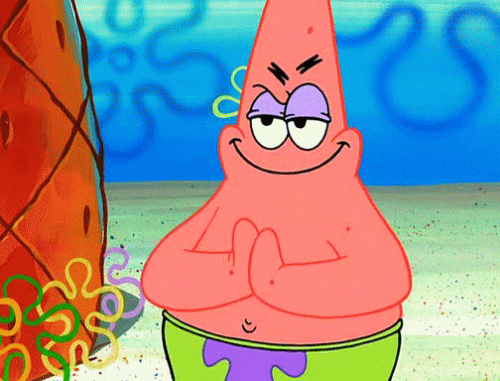
Honestly, I had no problems on the crew. We all did get along really well, considering the pressure. Did I hang out with them after hours? Some of them. Sherm Cohen and I were in love (as you'll see in Sam Henderson's caricature of us on the Hogan's Alley roundtable page).
The diplomatic answer is this:
I had a great time with all my partners. All completely different comedy and story sensibilities that brought out different things in my work. My Klein shows are different from my Reiss shows are different from my Povenmire shows are different from my Henderson shows.
But Derek Drymon taught me the most about the method, those characters, and particularly, about NOT being precious about your work.
When we were in writing sessions together we'd all be drawing and throwing out ideas as fast as we could. There was a lot of "no" in that room, because there HAS to be. The only way for it to be otherwise would be if most of what you did was perfect, and who can claim THAT?
Anyway, Derek drew more and faster and had more ideas than anybody. He scrawl something, get a big smile and say "how about this" and we'd say "no" and he'd scrawl another and say "then how about this? Or this? Or this?"
He never took it personally, and it never slowed him down. That combination of confidence and lack of ego seems self-contradictory, but it's what gets the job done. Steve was the same way.
SwiftGlimmer asks: Hi Jay Lender, awesome that you're here doing this! I really love your work.
I do have a question, what is the differences to how storyboards were done back when you worked on SpongeBob compared to how they're made to be now? And any tips on how one can get used to boarding how the industry expects it today?
Thank you for all the laughs and good times you and the crew gave us. 🙂 💛
JL: No thanks, please... just send money.
I think the biggest difference today is that the boarding is done digitally, and in secret.
It's a problem. This is a collaborative medium and--particularly in comedy, which so much animation is--comedy needs an audience.
Working on the wall keeps you honest.
And the digital tools encourage sloppy habits. Reused poses when a new one is called for. Skewing a drawing instead of making a new pose... like THAT'S somehow acting.
It encourages LONG RUNS of static acting, because copying and pasting is so easy. I do it as much as anybody else.
I hear a lot of talk now about how studios expect board artists to animate the show, and I'm not sure that's an accurate assessment of what's going on.
Yes, studios will ALWAYS try to get free work out of you, so they're not going to turn down the extra poses. But the styles have also changed. Anime-influenced camera work and action simply require more drawings at the board phase, so if you work on a show like that you can expect to work harder. If you want to be compensated properly for that extra work--or for ANY work--then you'll support a strong union. That's the tool you have to make sure you're not being taken advantage of on the job.
Sorry if I'm turning into an old dude. 🙂
Saint Nick asks: Anything that got left on the cutting room floor that, in hindsight, you wish happened/went through?
JL: I've posted a bunch of cut runs on my twitter @JayLender1. If I find more I'll certainly post them. I love that one from the free balloon show... and I love that it was cut!
There's one gag that got cut that I've been holding onto for 20+ years. I'll NEVER tell any of you what it is unless I get an opportunity to work it into another show, like Steve did with the orchestra gag from Clams. Or if I'm sure I'm going to die. Then it should be released for the world to enjoy.
patrick? asks: How does Ink and Paint coding work?

JL: Not a clue. Ask Teale Wang. Next question!
😉
Tlactl asks: Were there any particularly challenging episodes to work on in your opinion?
JL: Early shows were hard. None of us could figure out how to draw SpongeBob. It was a real struggle in that first year. You can see it all over Hall Monitor. Sherm bushwhacked it for us and we all followed his lead in season 2.
After that, the ones that broke me were probably Krabs in Love, for reasons stated, and Plankton's Army because of all those damned little plankton I had to draw. So many. So, so many.
Deleted User asks: Do you know of any scrapped episode ideas?
JL: Oh, god, we're not heading for Squidward's Suicide, are we?
I don't think I ever heard of one, but that's because I wasn't on the writing staff. There are always ideas that get cast aside. There was never a finished show or board that was mothballed while I was there.
Deleted User asks: do you prefer spongebob's cheeks facing upwards or to the side?
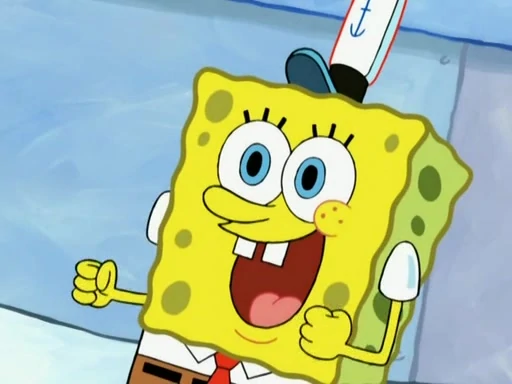
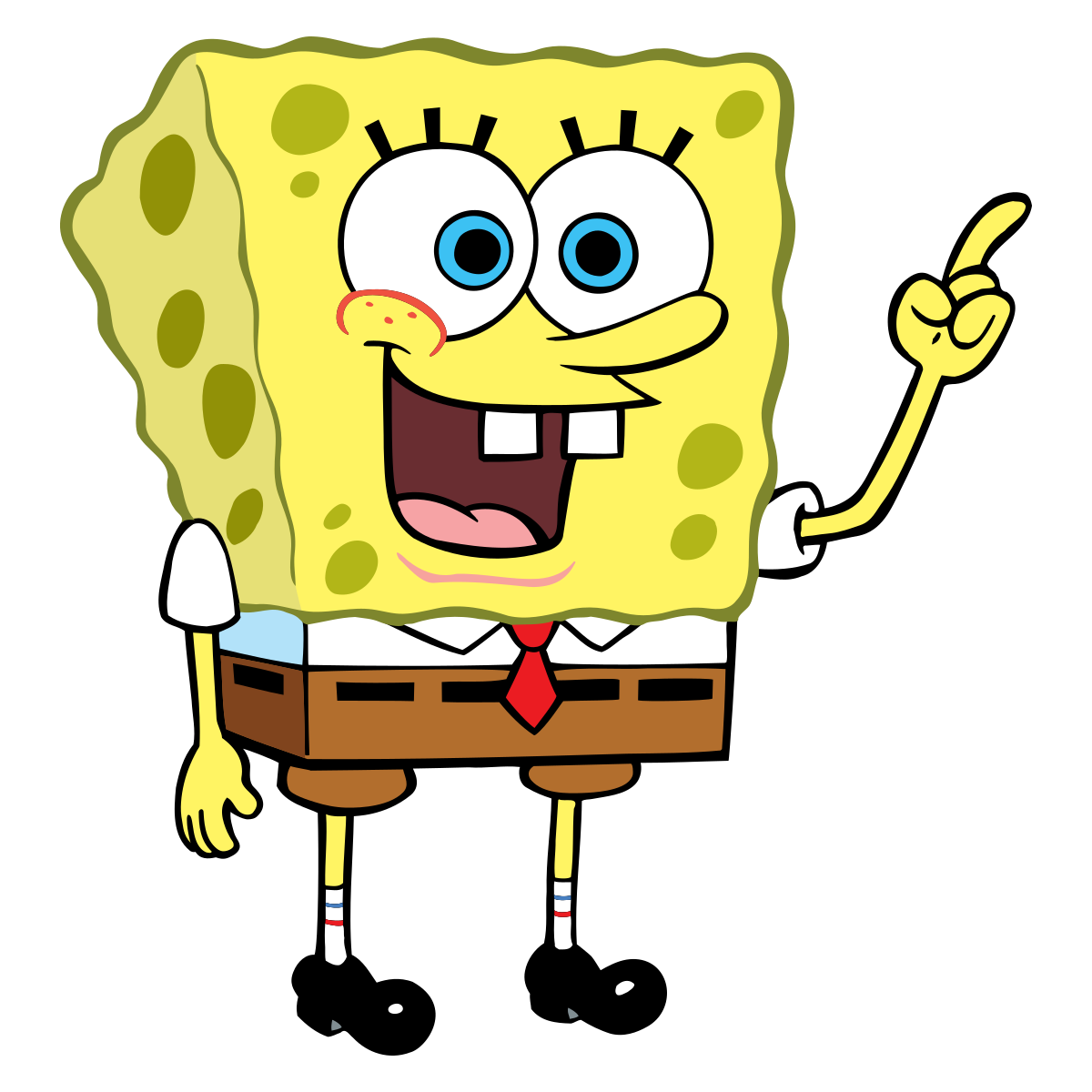
JL: I did Sponge during the upward years, and I was a holdout. Aaron and Carl were side-cheek guys and eventually their version won out. I only do the upcheek when it's called for now.
PickleMan: the warring cheeks
JL: I'm glad we're finally getting to the important stuff.
nautical asks: what episode that you worked on do you think had the most cut gags or lines?
JL: That's probably Clams, because of Steve's late change to the story. Other than that I don't know. We didn't think about it like that. 99% of everything we did was cut in the writing process. We were rarely surprised by a cut later on, because we had already worked everything out.
But I did have one notable exception:
I did a gag--which I'm sure you've all seen--in Just One Bite, where Squidward breaks into the Krusty Krab at night and gets torched by the security system... then gets torched AGAIN two seconds later. It's still one of the funniest things I ever did on the show, but it's been out of the American cut for 20 years. In my heart it's still there.
PickleMan: is the late change to clams just talking about the jaws ripoff or is there something else?
JL: Just the Jaws Theme gag. Working it into the show required cutting a ton of material. I forget if I still have the roughs for that show, so it may not be possible to reconstruct the "original" version.
Deleted User asks: out of the three seasons you worked on, which is your favorite and why?
JL: You guys think about seasons, but I'm just learning to do that. For us there was the original short order, then there was "finish season 1" then there were two announcements about being picked up for further seasons.
We'd have a little hiatus after each season, but work never really stopped. I picked up an Angry Beavers episode during one Hiatus, and I may have taken a few weeks off after another, but for the most part it was 3+ years of solid work. We did one show, then we did another, and nobody cared what "season" it was attached to.
There are, I think, a few distinct periods, though.
There was that first batch of shows that we did BLIND.
We're making episodes of something we don't understand, trying to learn EVERYTHING all at once. Tone, comedic sensibility, characters, drawing, how to work with each other, etc.
Early shows like Hall Monitor and Opposite Day.
Then there's the second batch of shows.
Here's a moment I remember really well:
Chuck and I got handed a story called Valentine's Day.
This had a lot in common with Krusty Love in that the point of the show was "wouldn't it be funny if Patrick got mad". The whole show was an exercise in making him angry so we could get to that ending where he's stupid Godzilla (and that closeup of him roaring was supposed to use the Godzilla honk, just so you know--glad to get that off my chest after two decades)
So we did the show and had a lot of fun with it... and this is around the time that the episodes were first coming back from overseas.
This is when you finally see WHAT YOU'VE BEEN MAKING!
Every time a show came in they'd pop it on a TV in the lounge and everybody would get together informally and watch the raw footage.
When we watched Valentine's Day people were making little bits of furtive eye-contact during Pat's rampage. The unspoken realization: "THIS is who this character is. He has this under the surface."
And it's not so much that Patrick is constantly on the edge of rage as that we got to see depth in the character. We suddenly knew WHO HE WAS.
And that moment was repeated over and over again as the first batch of shows came back. Suddenly you understand your own show... you start building on little tics from one show and they become character traits. Catch-phrases can be born, etc. It's the most exciting time in a show, that SECOND period.
Then the show premiered and became a hit, and we went into the third period, where we were confident, and playing. Great stuff happens in all three moments.
Then there's probably a 4th period, when you start pulling the wings off flies because you can, and because it's getting harder to find new material that feels iconic.
We could do Pat, Sandy and SpongeBob in outer space (not really) as a broad concept, early on. But it starts getting harder and harder to find ideas that feel like they're in virgin territory. You do sequels. Maybe they really DO go into space. You end up stepping on your own toes. That's certainly where they are now, though not through any fault of the crew or lack of ability. It's just #cartoonLyfe.
So, periods, not seasons. The end!
Deleted User asks: Any bits of the show you wrote that were inspired by your own personal life experiences?
JL: Everything is, to one degree or another. We are the sum of our experiences. But it's not like I was working out my personal ya-yas through SpongeBob. It wasn't therapy for me.
But I can reveal here that "Yorgie-Schmorgies", as said by SpongeBob and Patrick in Big Pink Loser is what my Uncle Sam used to call Manischewitz toasted barley-shape egg noodles with garlic and butter, because he couldn't rememeber "toasted barley-shape egg noodles with garlic and butter" Some Lender Family lore for you.
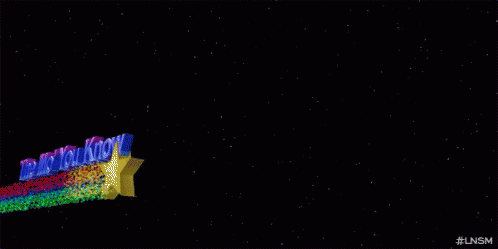
PickleMan: Alright, I think that's a wrap! thanks so much for coming out and answering our questions, Jay! and thank you to everyone that asked a question.
JL: Thanks everybody!
Credit to ThePickleMan and the rest of The Art of SpongeBob for arranging this Q&A